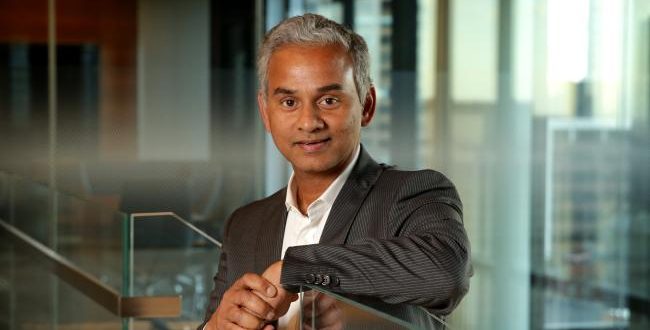Indian professional services giant Genpact is looking to make further inroads in the Australian market with the company’s boss NV “Tiger” Tyagarajan keen to capitalise on the outfit’s deep roots in the country.
Speaking to The Australian in a recent visit, Mr Tyagarajan said Australia had been one of Genpact’s best-performing markets in the past four years.
“There is a big push here to drive efficiency and leverage a lot of the new technology to create value,” he said.
“Market conditions are tough around the world, so transforming business models and going digital is becoming very important.”
Genpact is deeply involved in the banking and insurance sector in Australia and, with a presence in the market since 1998, Mr Tyagarajan said there was a distinct sense of continuity with many of its local clients.
“We know the market, we know the businesses well and have people internally who have spent more than 15 years working with Australian companies,” he said.
“It’s actually one of our favourite markets and we have seen the digital journey of a lot of the big companies unfold.”
Genpact started life in the late 1990s as a services unit within GE Capital. It left GE’s fold in 2005 and has since grown from a $400 million outfit to one worth $2.6 billion.
According to Mr Tyagarajan, times of crisis and economic volatility are almost always catalysts to big organisational changes.
The transformations are often painful, they force companies to ask difficult questions and rethink their playbook, but in the long run the process is crucial to long-term survival.of companies.
“Look at the banks. The global financial crisis forced them to rethink their overall business model,” he said.
“They had to ask if they needed to be in a particular business or asset class? The second thing was that regulators got more active and that created new work that needed to be done and new analysis of the data that the banks held.”
Genpact’s sweet spot is optimising business processes. This simplification is the first step in the digitisation journey for every organisation and Mr Tyagarajan warned that buying software without the requisite standardisation of processes would not deliver any results.
“There’s a balance between how much a company needs to spend to manage its legacy technology and move some of that to deploying new solutions,” he said.
Fundamental to that balancing act is an understanding that any piece of software entering an organisation has an impact on how a company manages its workflow, how it manages and secures information. According to Mr Tyagarajan, this necessary connecting of the dots has to be the first step in every digital journey.
“You have to ask these questions and make the changes before you bring in the technology,” he said.
“Historically, most organisations have just simply assumed that technology will just automatically solve the problem, but they were left disappointed.”
Many organisations are starting to wake up to this “process before technology” mantra but the migration of applications and devices from the consumer to enterprise world poses its own challenge.
“The one problem that has led to is that a lot of the new technology investment has gone into the interaction layer, which is the front end, sometimes at the expense of what’s happening beneath the surface,” Mr Tyagarajan said. “So you have a cool app that lets a customer get a loan or a credit card quickly, but if that’s the only thing that’s digital then the customer’s needs won’t be fully met,” he warned.
“A great front end needs to connect to an optimised middle and back office.”
Creating this end-to-end “one office” mindset is on Genpact’s agenda locally and Mr Tyagarajan said the company’s recent acquisition of Fiserv Australia, which handles close to 70 per cent of all cheques processed locally, has further reinforced its relationship with the Australian financial services sector.
“The Fiserv buy now gives us a platform to deepen our footprint in Australia,” he said.
Reader comments on this site are moderated before publication to promote lively and civil debate. We encourage your comments but submitting one does not guarantee publication. We publish hundreds of comments daily, and if a comment is rejected it is likely because it does not meet with our comment guidelines, which you can read here. No correspondence will be entered into if a comment is declined.





